Dr_Zu
The 80's were awesome. Right? Right???
Hey everyone. I'm an 30-year veteran medical device design engineer, but my training is mechanical / biomedical . . . so I'm relatively unequipped to understand the nuances of electrical engineering and I'm a total noob to LiFePO4 batteries. This is my first post here, but I'll make it a really long one to compensate for all of the posting that I haven't done in the past!  Seriously though, I really appreciate those of you who are active on the forum. I've learned a TON from all of you! I appreciate, even more, those of you who have the stamina to read through all of this post. I'll be as brief as possible, but that's not my strong suit!
Seriously though, I really appreciate those of you who are active on the forum. I've learned a TON from all of you! I appreciate, even more, those of you who have the stamina to read through all of this post. I'll be as brief as possible, but that's not my strong suit!
I just finished building a 12V LiFePO4 4-cell pack (see pics below) based on the knowledge that I gained here, from Will's videos, and from many late nights drinking good beer while reading and watching videos from all over the web. My BMS is from Overkill Solar and my application for the cell pack is powering the accessories on my pontoon boat (the boat is always used on a small ~45 acre lake so my application is far from "mission critical" . . . unless you consider losing tuneage mission critical, that is). All cells (ExpertPower 100Ah cells) were top balanced (using a constant voltage / currant power supply) and capacity checked (using one of the inexpensive load fixtures Will has reviewed) before being built into a pack. All cells checked out at over the 100Ah spec using the discharge fixture at 0.2C. I'm using a NOCO GEN5x1 Charger to charge the cell pack (set to Li-Ion setting, which NOCO claims is LiFePO4 compatible).
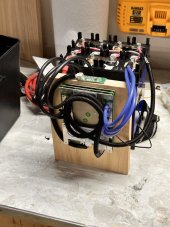

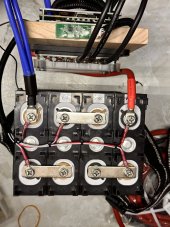
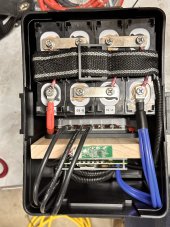
So I first had the BMS protection for cell overvoltage set to 3650 mV, which seemed reasonable based on what I had read online. What I quickly noticed is that the BMS would alarm for cell overvoltage before the charger had completed charging the cell pack (according to its proprietary algorithm). I did some searching and realized that the charger was designed to charge to 14.6 V (= 4 x 3650 mV) before shutting down. Even with a slight (and inevitable) cell imbalance of a few mV, the BMS would detect a cell overvoltage and fault. Hmmm.
More research (and beer) and I decided (wrongly?) that it would be OK to tweak the cell overvoltage setting to 3700 mV (see below for current BMS settings). After that, all was copesetic! The GEN5x1 charger fully charged the cell pack and stopped charging without creating any faults. All seemed right in the world . . . except that nagging feeling that it wasn't!
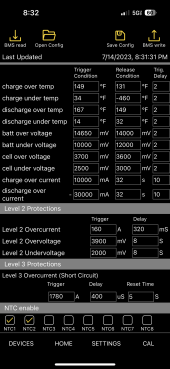


I reached out to NOCO to get their recommendations on how I should set up my BMS, which was a dumb question on my part! That's way too much liability for them to take on; helping me build my custom cell pack with components they neither make nor specify!?!? I should know better based on my own product development experience! I blame the beer on that one! However, good on them for giving me enough information (without disclosing any proprietary algorithms) to understand the basics of how the NOCO GEN5x1 charger works in Li-Ion mode:
Full off-grid solar power once I retire and have more time (and less money) to play! I really appreciate any feedback you all have. Thanks in advance!!!
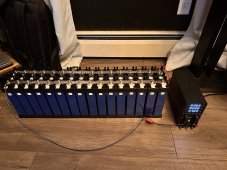
I just finished building a 12V LiFePO4 4-cell pack (see pics below) based on the knowledge that I gained here, from Will's videos, and from many late nights drinking good beer while reading and watching videos from all over the web. My BMS is from Overkill Solar and my application for the cell pack is powering the accessories on my pontoon boat (the boat is always used on a small ~45 acre lake so my application is far from "mission critical" . . . unless you consider losing tuneage mission critical, that is). All cells (ExpertPower 100Ah cells) were top balanced (using a constant voltage / currant power supply) and capacity checked (using one of the inexpensive load fixtures Will has reviewed) before being built into a pack. All cells checked out at over the 100Ah spec using the discharge fixture at 0.2C. I'm using a NOCO GEN5x1 Charger to charge the cell pack (set to Li-Ion setting, which NOCO claims is LiFePO4 compatible).




So I first had the BMS protection for cell overvoltage set to 3650 mV, which seemed reasonable based on what I had read online. What I quickly noticed is that the BMS would alarm for cell overvoltage before the charger had completed charging the cell pack (according to its proprietary algorithm). I did some searching and realized that the charger was designed to charge to 14.6 V (= 4 x 3650 mV) before shutting down. Even with a slight (and inevitable) cell imbalance of a few mV, the BMS would detect a cell overvoltage and fault. Hmmm.
More research (and beer) and I decided (wrongly?) that it would be OK to tweak the cell overvoltage setting to 3700 mV (see below for current BMS settings). After that, all was copesetic! The GEN5x1 charger fully charged the cell pack and stopped charging without creating any faults. All seemed right in the world . . . except that nagging feeling that it wasn't!



I reached out to NOCO to get their recommendations on how I should set up my BMS, which was a dumb question on my part! That's way too much liability for them to take on; helping me build my custom cell pack with components they neither make nor specify!?!? I should know better based on my own product development experience! I blame the beer on that one! However, good on them for giving me enough information (without disclosing any proprietary algorithms) to understand the basics of how the NOCO GEN5x1 charger works in Li-Ion mode:
- Constant current charge at ~5 amps until the cell pack hits 13.2 V
- Reduce constant current charge to ~2.5 amps (2 amps in my observations) until the cell pack hits 14.6 V
- Stop charging and monitor cell pack voltage.
- If cell pack voltage drops below 12.6 V, restart charging algorithm.
- Every 24 hr., restart charging algorithm (topping up cell pack)
- Is a BMS protection for cell overvoltage setting of 3700 mV too high (assuming that I want to optimize cell life)?
- If "yes", how do I keep the BMS from triggering a fault if I reduce it since I can't change the charger settings?
- Is the charger's daily "top off" mode OK for LiFePO4 cells. My gut is telling me "no" based on my research, but I can't point to anything specific. In any case, it's inherent to the GEN5x1 charging algorithm so there's nothing I can do to change it (except get a different charger).
- Is there a different/better charger that I should be using? My understanding is that LiFePO4 cells like to live in the 20% to 80 % SOC range, which GEN5x1 won't accommodate (since it always charges to 100%). Also, this isn't exactly a "marine" application (fresh water), but I need a charger that can handle an occasional indirect splash.
- Adjacent question, but what is the "Trig. Delay" setting in the BMS? I had assumed seconds, but it doesn't say and I haven't found any specific documentation on it.
Full off-grid solar power once I retire and have more time (and less money) to play! I really appreciate any feedback you all have. Thanks in advance!!!



